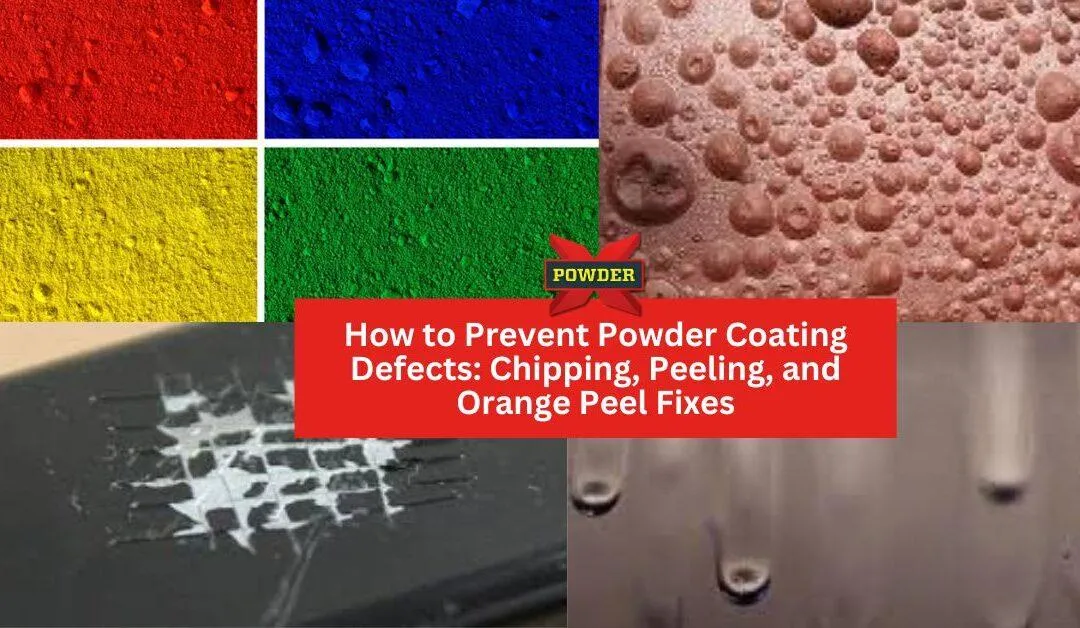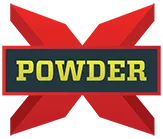
How to Prevent Powder Coating Defects: Chipping, Peeling, and Orange Peel Fixes
Powder coating is one of the most durable, cost-effective, and environmentally friendly finishing solutions available—but even the best powder coaters run into problems. If you have ever dealt with chipping, peeling, or the dreaded orange peel effect, don’t worry you are not alone.
As Joey Golliver, The Powder Coach, I’ve trained over 20,000 powder coaters worldwide and seen every coating failure in the book. Today, I’ll break down the root causes of these powder coating defects and give you real, battle-tested solutions to ensure your finishes are flawless every time.
1. Why Does Powder Coating Chip? (And How to Stop It)
Chipping is one of the most common powder coating failures and happens when the cured coating separates from the substrate due to poor adhesion or impact.
Causes of Chipping:
Inadequate Surface Preparation – Oil, dirt, or rust left behind prevents the coating from bonding.
Thin Film Build – If the coating is too thin, it won’t have enough impact resistance.
Overbaking or Underbaking – Poor curing weakens adhesion and makes the coating brittle.
Improper Powder Selection – Not all powders are designed for impact resistance.
How to Prevent Chipping:
Use Proper Pretreatment – A clean part is a coatable part. Make sure you’re using chemical pretreatment (iron phosphate, zinc phosphate, or zirconium-based systems) to create a corrosion-resistant layer that allows the powder to adhere.
Increase Film Thickness – Most powders perform best at 2.5–3.5 mils.
Check Your Cure Schedule – Follow the powder manufacturer’s time & temperature specs exactly to ensure proper cross-linking.
Choose the Right Powder – Super-durable polyester or urethane powders provide better chip resistance than standard polyesters.
2. How to Fix Powder Coating Peeling Issues
Peeling powder coating is a disaster waiting to happen—and it’s usually the result of poor adhesion from the start.
Causes of Peeling:
No Chemical Pretreatment – Powder doesn’t bond well to untreated metal.
Moisture Contamination – If parts aren’t completely dry, the coating won’t stick properly.
Improper Grounding – A weak ground leads to uneven powder coverage, increasing failure risk.
Applying Powder Over a Contaminated Surface – Oils, fingerprints, or condensation ruin adhesion.
How to Prevent Peeling:
Use a Reliable Pretreatment Process – A multi-stage pretreatment system (cleaning, rinsing, and conversion coating) ensures adhesion.
Dry Parts Properly – After washing, parts should be 100% dry before powder is applied.
Improve Your Grounding – Use a dedicated grounding rod and test your system frequently.
Ensure Proper Powder Coverage – Electrostatic spray guns should be set to the correct KV settings (70-100 kV for standard parts) to ensure even powder distribution.
3. How to Fix Orange Peel in Powder Coating
Orange peel is that uneven, bumpy texture that makes a finish look unprofessional. It’s not just cosmetic—it can also affect durability.
Causes of Orange Peel:
Incorrect Gun Settings – Too much or too little voltage affects powder flow.
Improper Powder Flow – Poorly fluidized powder creates uneven application.
Baking Too Hot or Too Fast – Powder doesn’t have time to level out.
Humidity Issues – Moisture in compressed air can cause poor powder transfer.
How to Prevent Orange Peel:
Adjust Your Spray Gun Settings – Use low microamps (20–30 uA) and adjust KV based on part geometry.
Use a Fluidized Hopper – This helps keep powder evenly charged and flowing smoothly.
Control Your Oven Temps – Follow the manufacturer’s recommended cure schedule exactly—no shortcuts.
Filter & Dry Your Compressed Air – Powder is hydroscopic (absorbs moisture), so using a dry air system is key.
